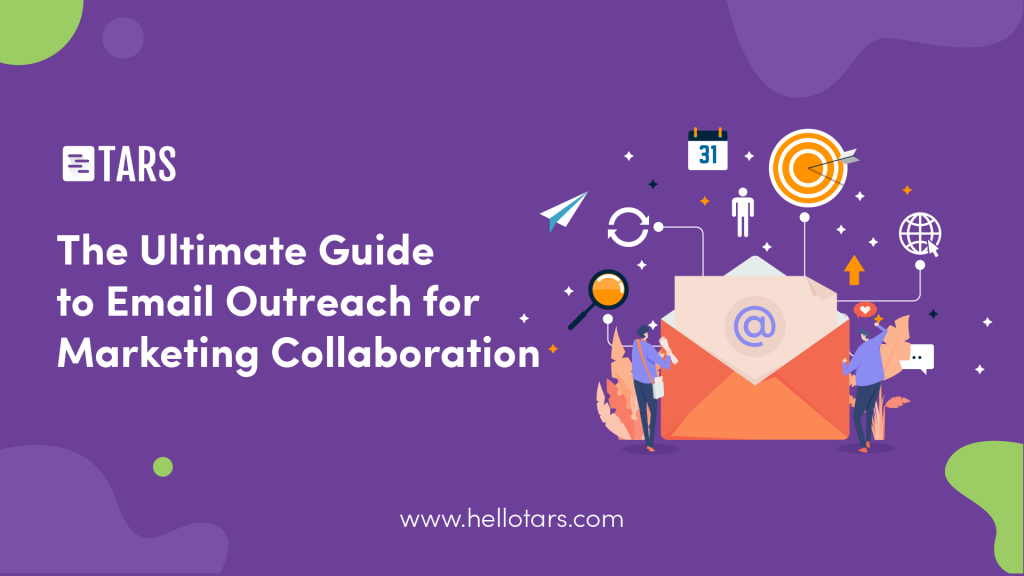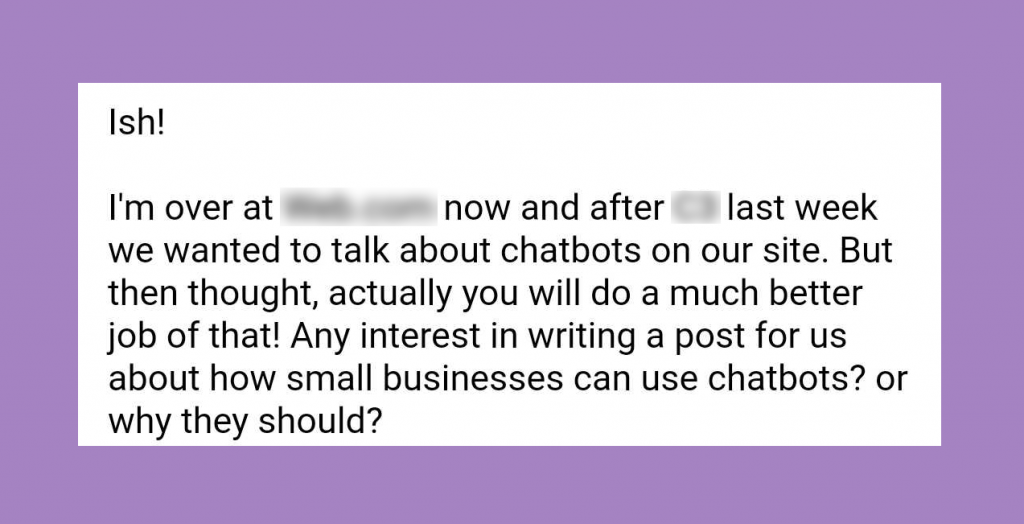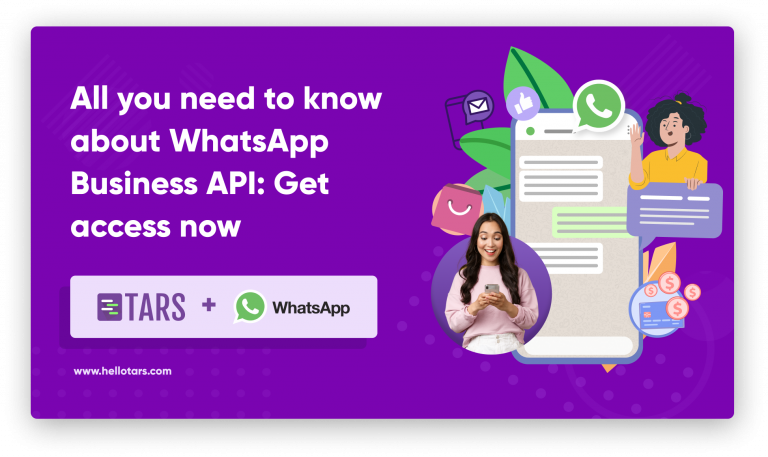The Ultimate Guide to Email Outreach for Marketing Collaboration

When I first got into marketing, I used naively think that my day to day job would be like something straight out of an episode of Mad Men👨💼
I thought that my work would be an even split between slick pitch meetings🕺, where I’d convince my colleagues of my genius content ideas😎, and the inevitable scotch drinking sessions🥃 that would take place after they were thoroughly impressed by my sharp marketing acumen👍
I was dead wrong😅
Marketing in 2019 is not that glamorous😐
There aren’t any pitch meetings and there certainly isn’t any fancy scotch😫
Instead, there’s a whole bunch of email outreach📧📧📧📧
Behind every successful marketing operation is a hardworking marketer sending out dozens of emails, follow-ups, and second follow-ups most of which go unanswered🙄
From personal experience, I find that within such a context, it’s dangerously easy to lose control of your workflow😵 and feel the inevitable pinch when your hours of hard work yield minimal results🥵
In this post, we are going explore how TARS🤖 and NinjaOutreach🐱👤 can help you stay sane in this grueling marketing environment🦸♂️
Step 1: Think of a Well-defined Goal🎯
The key to a successful email marketing campaign is having a well-defined goal before you start.
Without a tangible goal, your campaign will be directionless. You won’t be able to compile a focused email list, you won’t know how to phrase your emails and you certainly won’t see any positive results from your efforts.
If you need some inspiration for what to set as your goals, here are six broad goals that we use for most of our email outreach at TARS 👇
TIP: The image above is actually from a larger airtable that we use to track all of our email outreach templates and results. I highly recommend using something similar for your campaigns. Keeping everything structured goes a long way in helping you stay on top of everything.
Step 2: Structuring Your Email Sequence💭
Once you’ve defined your goals for the outreach campaign it’s time to start thinking about the actual mails you are going to send out.
The first step in this process is to create a basic skeleton for the sequence.
This means that you need to define how many mails you are going to send out, what purpose each mail serves in the sequence, and depending on the context, what piece of content you will share with the person on the other end.
For the six categories I mentioned above, we generally send out a 3 mail sequence consisting of the first email, where we ask the other person for what we want (e.g. newsletter feature, guest post opportunity etc.), and then two follow-ups in case we don’t get a response, each with a 5-7 day gap in between.
The reason we settled on this number is that we get a lot of these emails ourselves and when someone sends us more than three it feels a bit overbearing and makes us less likely to respond.
Step 3: Writing Your Emails📝
Ok now that you’ve got your sequence structured you need to start writing the actual emails that are going to be sent out.
I find that a lot of marketers overcomplicate this step.
They try a bunch of “genius” tactics to convince the person on the other end to do what they want, and honestly, most of them don’t work.
For example, I’ve noticed that a lot of people send me emails about guest post opportunities and backlinks claiming that they are “huge fans” of the TARS blog.
While I do respond to some of these emails just because they seem like good opportunities, the fake love/respect that they convey has nothing to do with my response.
It’s pure fluff that can be avoided, in my opinion.
We haven’t got to the mailing list part of this post yet, but if you are looking for backlinks, feedback, guest post or any other type of marketing collaboration opportunities you are likely reaching out to a marketer, content manager or a journalist.
As someone who fits into one of these categories myself, I can personally attest that all of these people are getting similar emails every single day and they know your underlying motive for reaching out.
They know that you collected their email in a giant spreadsheet because their company met certain criteria (e.g. same vertical, large audience, relevant content);
They know that you likely aren’t a “huge fan” of their work;

And they certainly know that all you’re trying to do is hit your monthly targets.
In fact, most of them (the marketers at least) probably have similar targets themselves and are doing the exact same sort of outreach for their own companies.
With all this in mind, at TARS, we try to get straight to the point in our emails.
For example, if we are reaching out for a guest post, we straight up tell the person on the other end that we want a guest post and tell them the unfiltered reason why we are reaching out to them (similar audience, want to grow our partnerships).
Similarly, in our first follow-up, we briefly remind the other person about what we asked for and ask them for a response.
And finally, in our second follow-up, we play on the fact that they also have targets to hit and offer them a trade of links or posts
We’ve been using this no-fluff approach for some time now and we consistently get about 5 good marketing collaboration leads every single month.
Another point to consider while writing these emails is what CTA you want to include in them.
The easiest one is to just ask for a response on that same email thread.
In most contexts of marketing collab this works, because often you are just asking for the person on the other end to add a backlink or send you their guest post requirements.
But in some cases, a simple email response doesn’t work.
If you want to work on larger marketing collabs (e.g. fullscale co-marketing campaigns, webinars, etc), you need an effective way for the other person to book a time to speak with you.
We’ve found that meeting chatbots are a good bet for us.
They integrate with our Google Calendars and let others book available slots of our time for a call.
The primary value that they offer is is that they help us avoid the messy back and forths that ensue when trying to coordinate over plain text email.
Step 4: Defining an Email List📃
Ok so now you’ve got your emails written, you need to find a relevant group of people to send these emails to.
There are a bunch of ways you can go about doing this.
One valuable source for potential contacts in the marketing collaboration game is your client/email list.

At TARS, we’ve found amazing collaboration opportunities by reaching out to our existing clients & newsletter subscribers and I’d highly recommend it to anyone with an established mailing list.
Another viable approach is to do some basic keyword research to see which companies are working in the space you want to do collab in and then manually find the emails of the marketing folks at those companies to get.
If you are taking this approach, I highly recommend that you use a tool like NinjaOutreach to improve your workflow.
We use their chrome extension at TARS and it has done wonders for our productivity.
Once you install it, you can activate the extension while you are doing the aforementioned keyword research to see valuable marketing info about the website you are on (things like social feeds, domain authority, backlinks, moz authority etc.).
If that company matches your requirements for marketing collab then you can save their profile to your lists in the NinjaOutreach dashboard where you can actually manage your outreach campaigns. But more on that in the next step.
Step 5: Setting Up Your Campaigns🔨
Ok so now that you have a concrete goal, a sequence of well-written emails and a well-researched email list, it’s time to actually begin the campaign.
I highly recommend that for this step you invest in a good email campaign client.
There are a ton of tools out there that let you set up multiple campaigns to reach out to your various lists, and best of all show you analytics on how those campaigns are performing.
We highly recommend NinjaOutreach for this, for three reasons
- It has a powerful feature set- From its handy analytics to its powerful list management capabilities, NInjaOutreach goes toe-to-toe with any other email client available on the internet
- Its UI is intuitive- We’ve tried other email clients and for marketing collab, our team found NinjaOutreach to be the easiest to use. There’s seriously no learning curve in becoming a NinjaOutreach pro and as marketers who are always overextended we really appreciate that at TARS
- It integrates with your research workflow- As I mentioned in the previous step, NinjaOutreach has a powerful chrome extension to bolster your email list research, and their outreach client integrates with that workflow smoothly. SO once you’ve found a publication/company that you want to collab with on their extension, you can easily add it to one of your outreach lists in the NinjaOutreach dashboard.
Of course, if you like being stressed out and want the extra hassle of manually setting up and tracking campaigns to save a couple of bucks, feel free to use good old fashioned mail merge for your campaigns.
Step 6: Lift-off🚀
Once you’ve got your campaigns set up, all you need to do is hit the launch button and wait as the responses inevitably come trickling in.
Arnav is the Director of Content Marketing at Tars. He spends most days building bots, writing about conversational design and scrolling through Giphy’s trending section looking for the gifs that go into the Tars Newsletter.
Recommended Reading: Check Out Our Favorite Blog Posts!

Why CSMs Are Vital For Chatbot Marketing

Making Your SEO Count

All You Need To Know About WhatsApp Business API: Get Access Now

Our journey in a few numbers
With Tars you can build Conversational AI Agents that truly understand your needs and create intelligent conversations.
years in the conversational AI space
global brands have worked with us
customer conversations automated
countries with deployed AI Agents




